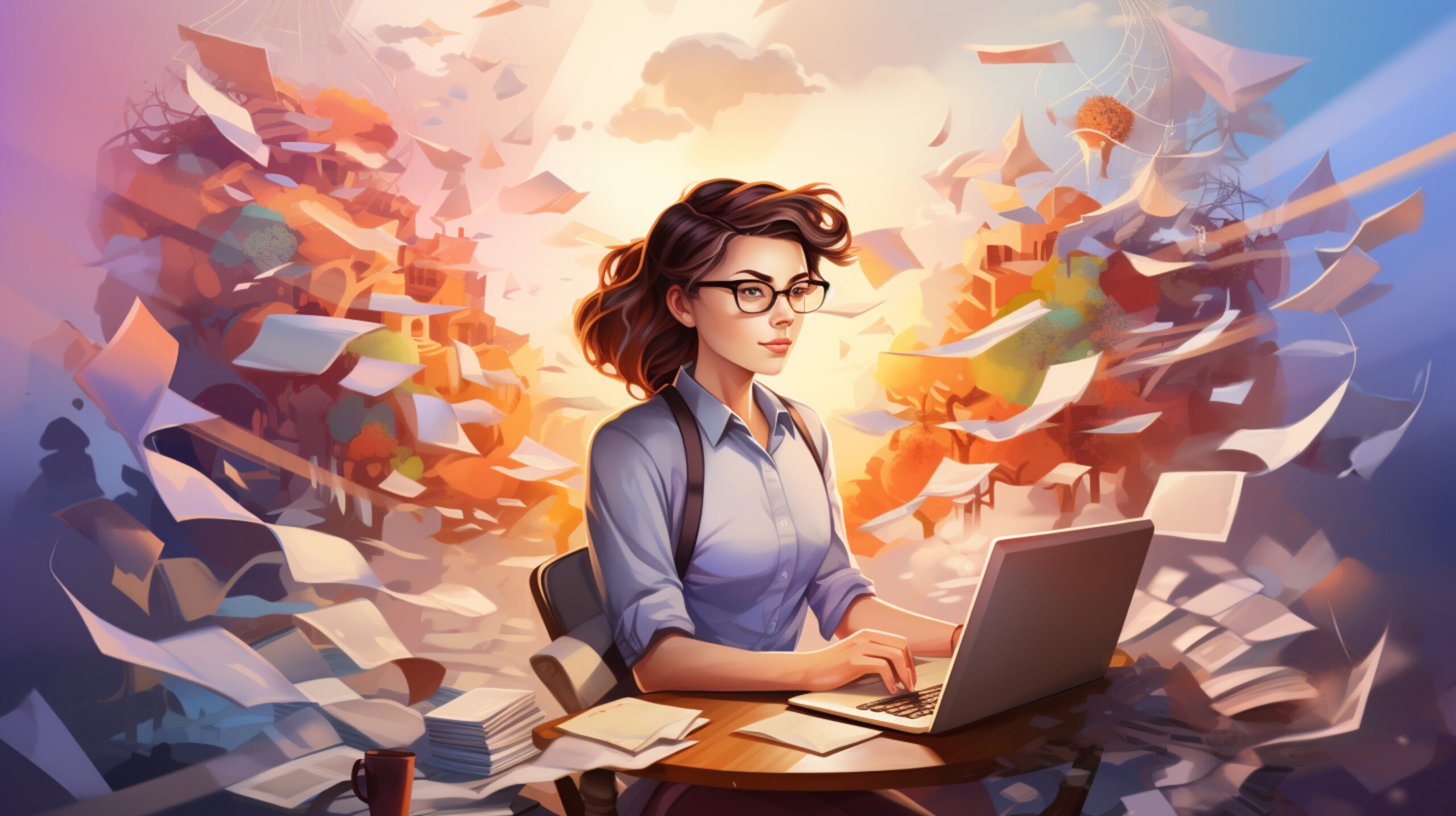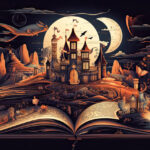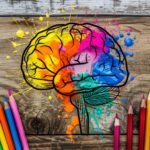Chaos to Understanding
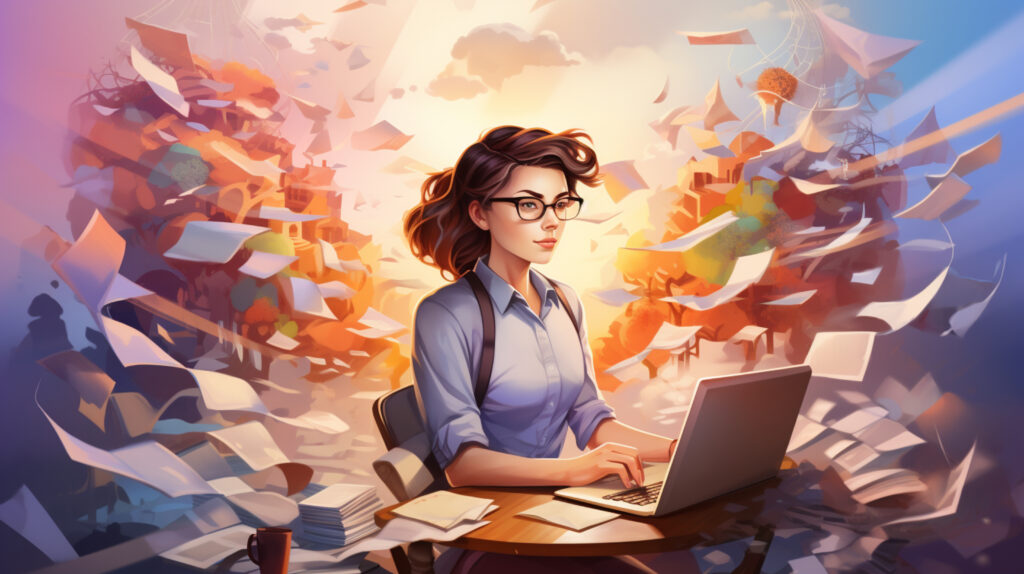
Have you ever been stuck in the dense and tangled mental forest of ideas that completely envelops you? Thoughts, sharp like brambles clawing at you to get your attention, distorted and overlapping, making clarity impossible? For years, I felt lost in this mental wilderness, plagued by doubts and imposter syndrome. I had convinced myself several times that my journey as a writer was doomed. Every writing attempt was like battling through an impenetrable thicket of self-doubt, with each failure and hesitation felt as a physical blow, overwhelming me with the desire to escape my own mind.
In the midst of this chaos, my muse bombards me with ideas, building anxiety with each new insight. The compulsion to bring my characters to life becomes overwhelming, manifesting as physical pain and suffocation. Characters spring fully formed into my mind, each with their own backstory and demands, but the plots elude me. Stories come to me as emotional arcs and themes, not words.
The rise of AI (artificial intelligence) in creative fields has stirred a lot of debate, especially with concerns about its potential to overshadow human creativity. While the misuse of AI, such as copying and pasting generated content that has been packed with as many KEYwords as possible, is undeniably wrong and diminishes the art form; it’s important to recognize that we’ve long welcomed and accepted tools like grammar checkers to enhance our work without question. AI can be a wonderful tool that helps shape and refine our ideas without replacing the human touch. What defines the value of a story is its emotional impact and resonance, not the tools used to bring it to life. AI serves me as a creative aid, not a substitute, allowing me to express my voice more vividly and showcasing how tools can elevate rather than undermine creativity.
The Challenges of Traditional Writing for Neurodivergent Writers

Navigating the complexities of writing with a neurodivergent mind brings unique challenges, particularly when traditional methods clash with how my mind processes information. For me, crafting a narrative comes the same way as visual art comes to me, in layers with each contributing to a rich, textured multifaceted image. Yet, translating this artistic process into writing is far more daunting. I begin with broad outlines, but these often evolve into a tangled mess of ideas, plot twists, and alternate storylines. Before AI, outlining felt like hacking through a dense jungle of possibilities, where my thoughts tangled knotted. Each new concept demands its own path, but also wants to pull the rest of the ideas along with it. The frustration of navigating this chaos is exhausting and nothing feels right or true to the story.
The emotional toll of traditional writing methods is no joke. “Just write,” they said. Easy, right? Except the moment I sit down, my brain stages a revolt. “Just” write what? My grocery list? The plot? The characters? The subplots? Everything? Fine, everything it is—now, what comes first? Oh, it’s up to me? Great. How do I map out all these tangled possibilities? A spreadsheet? Index cards? A séance with the ghosts of failed stories past? But what do I write? Cue the void. The anxiety of choosing the wrong path, paired with an overwhelming array of options, is mentally paralyzing. Each decision feels like stepping on a landmine that could detonate a mental block, turning the process into a slow, joyless slog through a minefield of my own making.
Sensory overload only adds to the misery when my vivid internal concepts refuse to take shape on the page. Every failed attempt amplifies the chaos, bouncing back like a distorted echo and joining the cacophony of thoughts demanding attention. In this mental whirlwind, focusing on any single aspect of the story feels exhausting and almost impossible. AI steps in like a slightly sinister sous-chef, taking my raw, swirling ideas and whipping them into a coherent outline, stabilizing the whirlwind of chaos in my head. This partnership doesn’t steal my creative thunder; it turns the noise into a melody, allowing me the twisted joy of crafting stories. AI serves as a compass, leading me through the labyrinth of my chaotic thoughts to shape a story that finally flows, even if it drags a little madness along for the ride.
AI as a Creative Prosthetic

In my writing journey, AI has become less of a crutch and more of a creative catalyst—a prosthetic for my mind’s wilder impulses, helping me transmute chaotic inspiration into something almost sane. Rather than replacing my creativity, AI functions like a finely tuned funnel, catching the wild spray of ideas, emotional arcs, and plot fragments that my brain throws out and distills them into something resembling a coherent narrative.
The most transformative part of using AI is how it assists in my never-ending cycle of revisions. I start with a brain dump, a veritable landslide of ideas, themes, and half-baked metaphors that I just toss onto the page without a second thought. From this raw, unfiltered chaos, AI helps me carve out a semblance of structure, crafting outlines that steer the runaway train of my story back onto the tracks. With the Snowflake Method as my guide, AI helps me refine these outlines, expanding and deepening them until they start to resemble the vision in my head. This process feels like repeatedly slapping clay onto a statue, reshaping and molding it. It’s iterative, it’s messy, and it’s strangely satisfying—Dr. Frankenstein with his monster.
What I enjoy most about AI is the freedom it gives me to experiment; to toy with perspectives and styles without the gnawing fear of failure. With AI, I can draft a scene from multiple viewpoints, indulge in bizarre plot twists, or completely upend the narrative just to see what happens. This ability to play with the possibilities keeps the writing process lively and dynamic, turning potential roadblocks into springboards for innovation. It’s like being in a mad scientist’s lab, where the unexpected is always just one experiment away. AI doesn’t dull my creative edge—it sharpens it, providing a scaffold for my wilder ideas while letting me explore the darker corners of storytelling. This partnership doesn’t just make the writing process easier; it amplifies my ability to craft narratives that feel right, transforming the abstract chaos in my mind into stories that, for all their madness, finally make sense.
The Value of Neurodivergent Stories
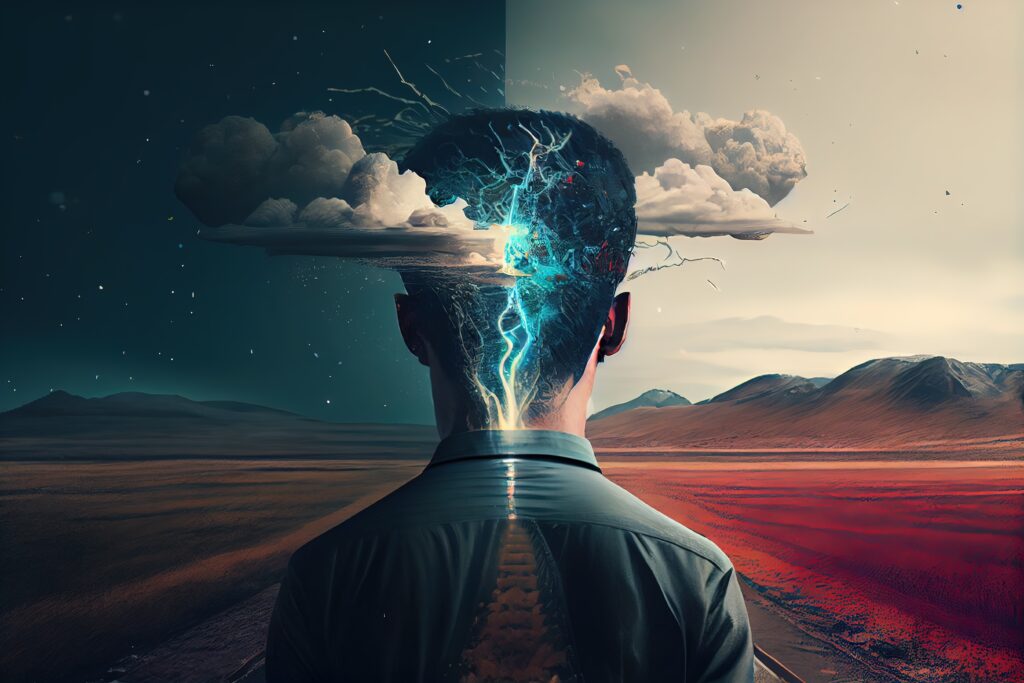
AI in writing often draws raised eyebrows and cynical smirks, with critics pondering if a machine-assisted narrative can truly possess depth. But let’s be honest: the soul of a story isn’t trapped in the tools used to craft it, but in the emotions it evokes and the thoughts it ignites. Whether painstakingly sculpted by human hands or conjured with AI’s eerily precise touch, the true merit of a story lies in its ability to strike a chord deep within the reader. AI doesn’t stifle creativity; it gives it an edge, taming the wild chaos of ideas into something that resonates with unnerving clarity.
Picture it this way: just as an artist might opt for thread painting over oils or tattooing over watercolor, each method demands its own unique finesse to achieve the desired impact. In thread painting, I start with the lightest threads, layering darker shades to build depth and complexity. Tattooing follows a similar approach, progressing from light to dark, ensuring every line and shadow aligns with the vision. AI, for me, is just another tool in my creative armory—not the source of my creativity, but the blade that sharpens it. It enables me to fine-tune the emotional and thematic core of my story, bringing its essence into stark relief.
In the end, the worth of a story is measured not by the tools that shape it, but by the indelible mark it leaves behind. AI, like a sculptor’s chisel, carves raw ideas into something enduring, something that haunts the reader long after the final word. Let the skeptics sneer—my stories, born from the turbulent symphony of a neurodivergent mind and honed by AI’s calculating hand, lose none of their potency. If anything, they’re all the more compelling for it.
Conclusion
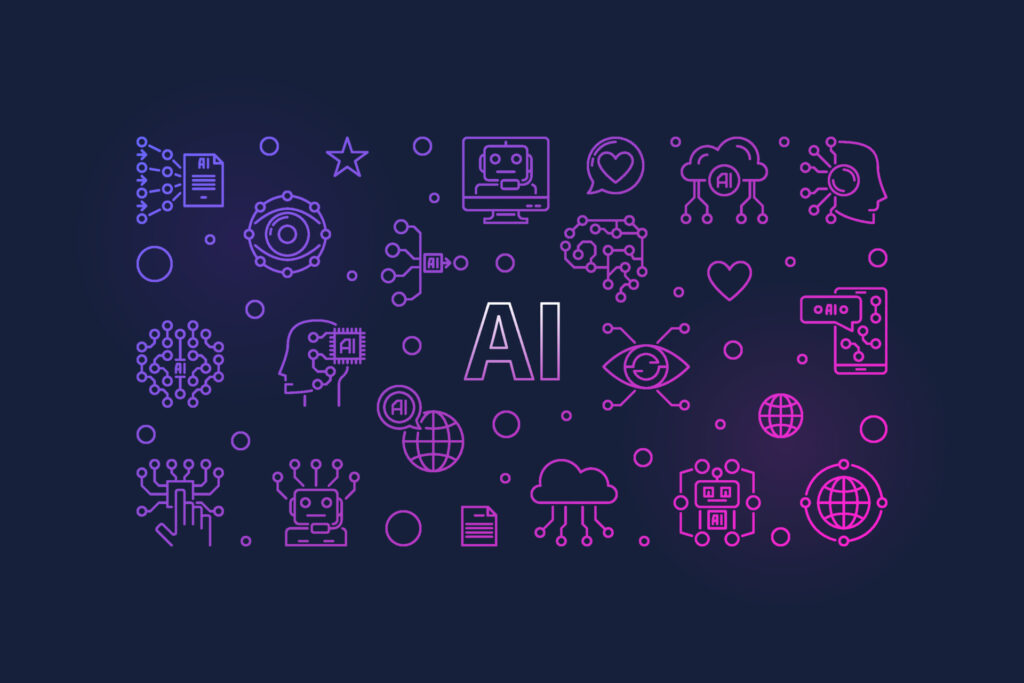
Integrating AI into my writing is like discovering a chisel amidst a block of rough stone, each strike bringing clarity to the chaos. Rather than battling to shape my raw, tumultuous thoughts into something coherent, AI helps me chisel away the confusion, revealing a finely detailed masterpiece beneath. It’s not merely an assistant; it’s a sculptor’s tool, carving away the excess and honing my creative expression. Far from stifling my creativity, AI energizes it, providing structure in the midst of the storm and transforming the tangled threads of my imagination into narratives that genuinely resonate. In this twisted partnership, AI doesn’t just tame the wild beast of my brain—it helps me turn it into a well-ordered creature, ready to captivate and provoke.
To my fellow neurodivergent writers, think of AI as your mischievous co-conspirator in this darkly comic escapade. It’s your assistant, helping you untangle the chaotic brain dumps, refine convoluted plots, and experiment with wild styles without hogging the limelight. Embrace this tool as a partner in your creative journey, letting it bolster your unique process and reveal fresh ways to infuse life into your stories.
AI has transformed my writing from a chaotic circus into something almost coherent. It’s not merely a tool; it’s a deviously efficient partner in crafting narratives that strike a chord. If you’re slogging through your own mental jungle, let AI be your compass, illuminating the murky path and sharpening your storytelling to its most gripping edge.

